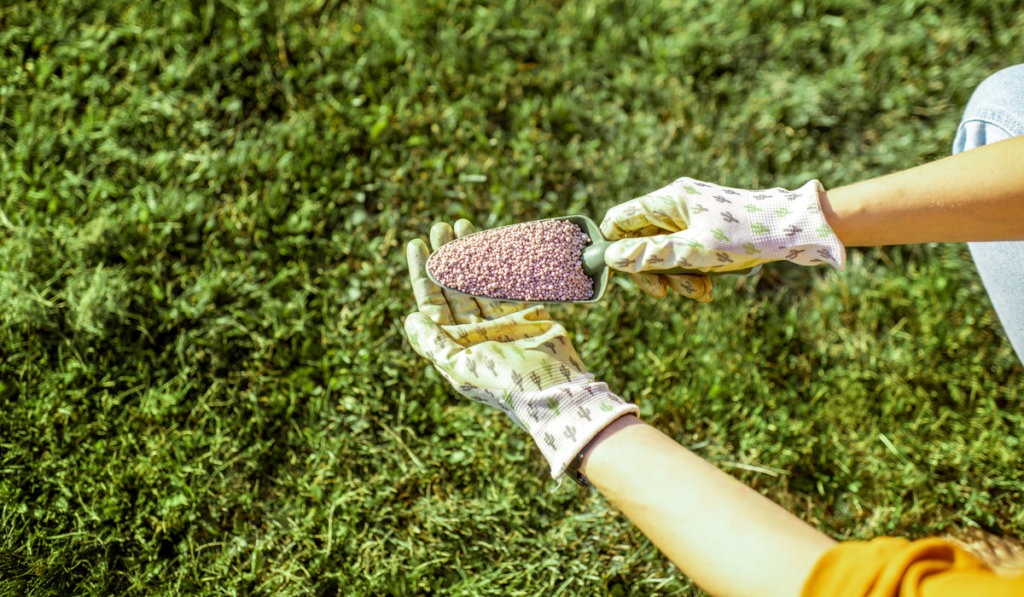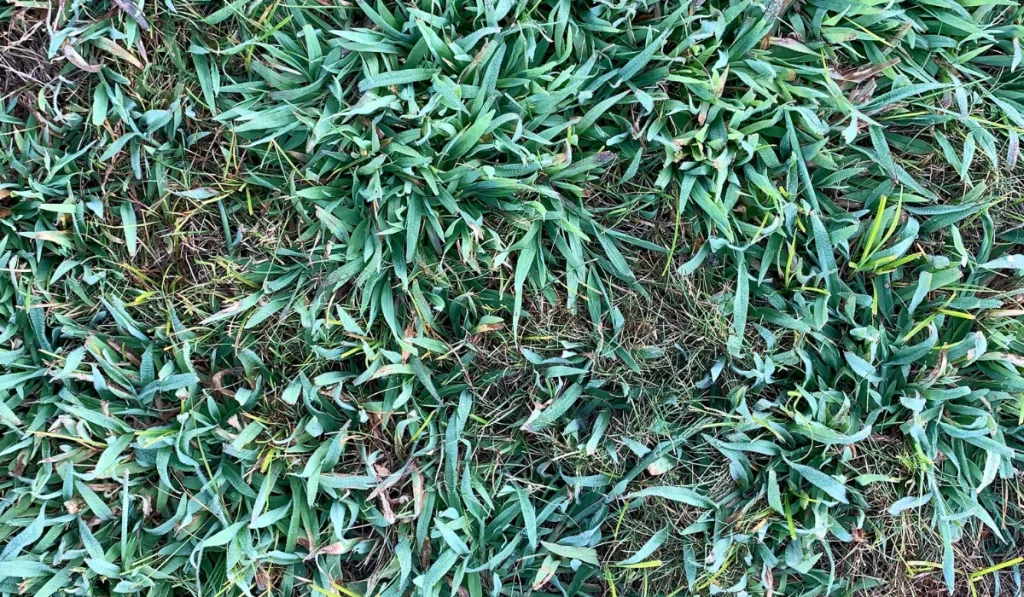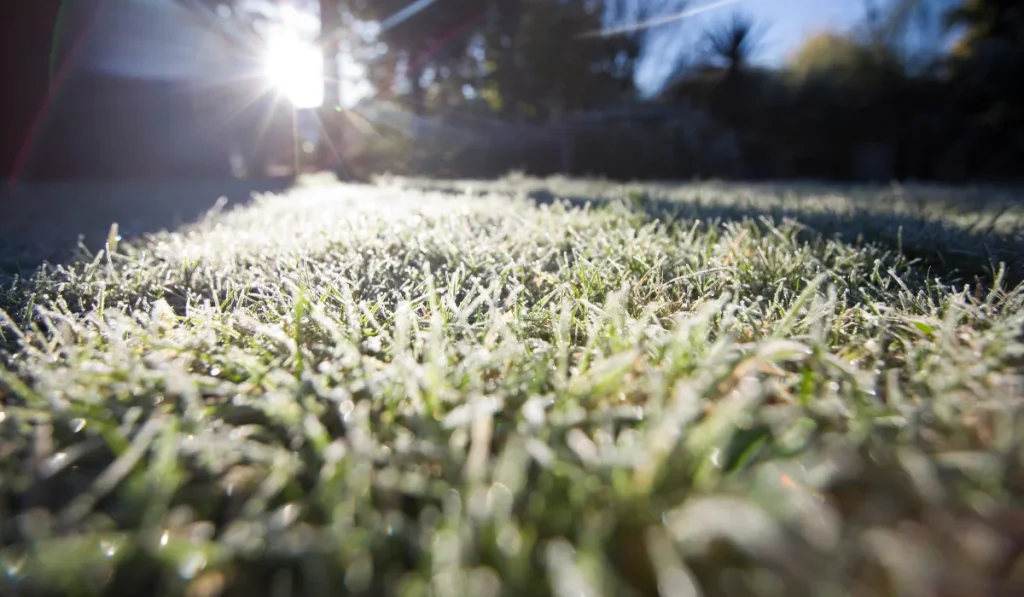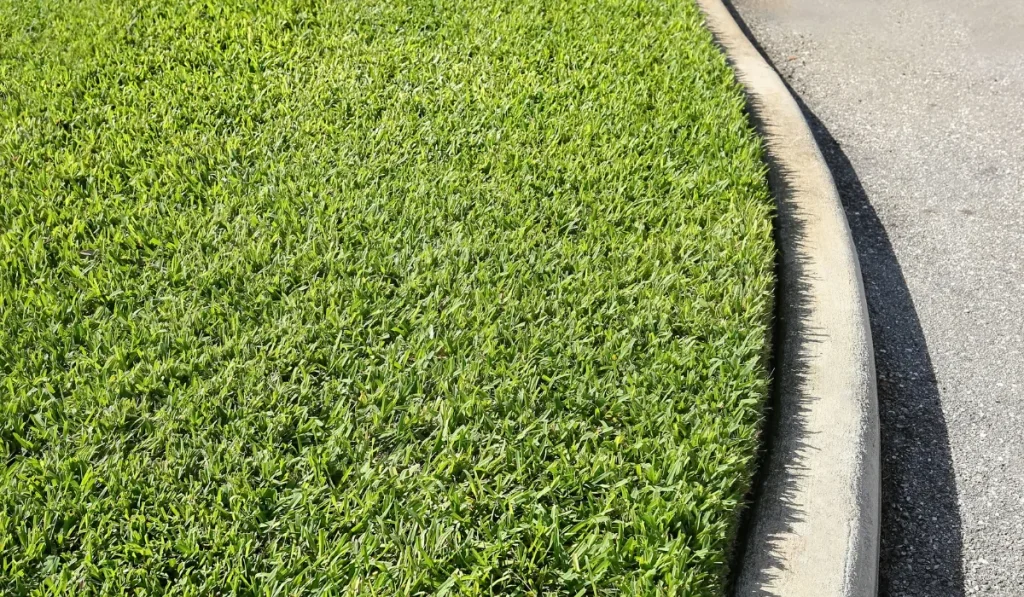The grass is always greener on the other side, which is why so many Americans take lawn care so seriously (and research shows that many over-fertilize their lawns trying to top their neighbors). But misinformation about lawn care can be harmful to your local ecosystem.
When you’re choosing between liquid and granular fertilizer this season, take these factors into account.
Key Takeaways
- Liquid fertilizer is a concentrate diluted with water that you spray over your lawn, which contains nutrients, supplements, and other important chemicals to keep your lawn healthy.
- Granular fertilizer consists of dry pellets that are shaken over your lawn, containing similar nutrients and chemicals to liquid fertilizer.
- Choosing the right fertilizer for your lawn depends on a number of factors, such as your type of soil, your type of grass, the local climate, and lifestyle preferences.
Liquid Fertilizer
What Is It?
Liquid fertilizer typically contains a mixture of nitrogen, phosphorus, and potassium (as well as wetting agents, insecticides, fungicides, and weed killers), and the ratio in percentages will often be displayed on the package in N-P-K order (i.e., 16-16-16 or 24-4-12).
Liquid lawn fertilizer typically comes as a liquid concentrate that is meant to be diluted with water and then sprayed over your lawn. Some liquid fertilizers also come as a dry or powdered form that may be dissolved in water and sprayed on your lawn with a sprayer.
What Are the Advantages?
Liquid fertilizers are easy to apply to your residential lawn and can be easily sprayed in a uniform layer.
They can also ensure good bioavailability of nutrients, meaning they’re absorbed more quickly into the soil. Liquid fertilizers are flexible in that they can be applied either to the ground or to the plants being treated themselves.
They can also be targeted towards specific areas in need of growth. Quick-release formulas found in liquid fertilizers reach your plants right away, and every drop contains the same ratio of nutrients.
Finally, liquid fertilizers are easy to blend with other lawn products, like crop protection solutions.
Disadvantages
Liquid fertilizers can often be quite expensive, especially if you don’t buy in bulk. They’re easy to over-apply and can easily wash away with rain or irrigation.
Liquid fertilizer is also difficult to store (it needs to be kept at room temperature) and runs the risk of volatilization (evaporating into the atmosphere).
Granular Fertilizer
What Is It?
Granular fertilizer typically comes in the form of dry pellets (or “granules”) that are broadcast onto your lawn with a mechanical spreader. These pellets, like liquid fertilizer, contain N-P-K in various ratios.
Unlike liquid fertilizer, which contains an identical dose of nutrients in every drop, granular fertilizer contains a unique combination of nutrients in each formulation. Some granular fertilizers also contain insecticides and other lawn care chemicals.
Advantages
Granular fertilizer is inexpensive compared to liquid fertilizer, especially when bought in bulk. It’s long-lasting and has a far longer shelf life than liquid fertilizer (it’s virtually indefinite, as opposed to liquid fertilizer’s 8-10 year expiration date).
Granular fertilizer is also easy to spread—you simply shake the pellets out of the container and across your lawn. It’s easier to store, it’s efficient, and slow-release options are available.
Disadvantages
Granular fertilizer takes longer to absorb than liquid fertilizer, as the nutrients tend to be less bioavailable.
It’s difficult to ensure it’s applied in a completely even layer across your lawn, and applying it unevenly might be harmful to pets and wildlife. Granular fertilizer also has the potential to be “hot,” meaning it contains high levels of salt content, nitrogen, and potassium, causing roots to steer clear of it.
Choosing the Right Fertilizer for Your Lawn
Factors to Consider
One is soil type and whether your soil is already fortified with nutrients (i.e., from compost). Another is climate (i.e. whether it’s too cold where you live to store liquid fertilizer, or if frequent rain might wash away liquid fertilizer).
The type of grass grown on your lawn also affects when and how you’ll need to fertilize it. Finally, personal preference may be a factor—whether you prefer to spray your lawn or use dry pellets, whether pets are a concern, and how much you’re willing to spend on fertilizer.
Where to Start
For new sod lawns, it’s important to let the roots get established by providing an adequate amount of phosphorus and potassium but not too much nitrogen, so choose a fertilizer with an N-P-K ratio of 8-16-16 or 16-16-16. (25-5-5 is a good option if you’re looking for a slow-release spring/summer fertilizer to start with.)
Liquid fertilizers are also considered good “starter” fertilizers for new sod lawns, since they don’t run the risk of being too “hot” like granular fertilizers.
lEstablished lawns need the most phosphorus in late spring, and it’s a good idea to apply quick-release granular fertilizer in late spring and early fall.



